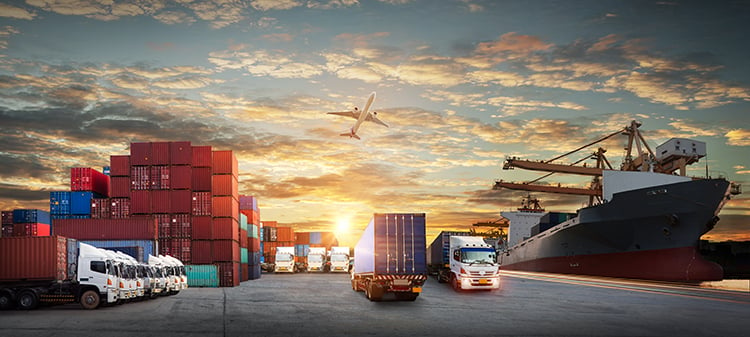When the electronics world was preparing for the Chinese New Year (CNY) 2020, I don’t think any of us could have imagined what we would be planning for CNY 2021, and even fewer people would have predicted what we will be going to be up against in 2022.
Welcome to what is being called “Super Peak” season by some, and “Perpetual Peak” by others in the industry. Personally, I think both are accurate. We can all agree that we have been in a state of Perpetual Peak since March 2020. But, looking at the next 120 days, it’s clear that we are going to be headed straight into a Super Peak. So, what does all of that mean for the electronics supply chain? Essentially things are going to get more expensive before all of this is over.
Down the Road
When we look at planning for peak season, we face two challenges:
- The fragility of the China supply chain.
- The capacity across all modes of transportation.
They each provide their own set of challenges, and opportunities if we plan correctly.
Looking at the actual manufacturing challenges coming out of mainland China, we can all agree that the lead times we have all been pushing against for the last year are going to be around for the foreseeable future. Depending on who you are listening to, the supply chain lead times could start to clear up as soon as Q2 2022, or as far out as Q4 2023.

Many ports are backed up with goods waiting to be unloaded, while some major companies are purchasing commercial flights to ship their product.
Current lead times out of mainland China are being impacted by three things:
- Zero Tolerance Covid Policy
- Worker Shortages
- Rolling Power Outages
Let’s look at each one and the impact on the CNY.
Zero Tolerance Covid Policy
China has taken what it calls a Zero Tolerance Covid Policy. To achieve this, the Chinese government has been very aggressive with shutdowns related to any Covid-19 cases. Just at the time of this writing (Nov. 5, 2021), there was a report that more than 50% of the flights out of Beijing were canceled due to what is being called a “handful” of positive Covid-19 cases.
The Beijing Capital International Airport and the Beijing Daxing International airport both had heavy cancelations. Residents who left the city and have been to “hot spots” are being asked to stay where they are and not return. Shangai Disneyland closed entry to new visitors on Oct. 31, 2021, and has tested more than 30,000 people as a result.
In August, the port of Ningbo was closed due to positive tests and didn’t resume full activity for several weeks due to a single positive test. The port of Nigbo is the third largest shipping port in the world. In June, the Chinese government had shut down the port of Yantian, the 4th largest port after an outbreak.
Worker Shortages
This policy is not only impacting the ability to move goods out of the country as soon as they are ready, but they are also impacting manufacturing. With the Chinese government restricting travel and shutting entire cities down over a small rate of Covid positive cases, staffing levels for manufacturing facilities are running at an all-time low. Manufacturing locations across mainland China are struggling to maintain staff levels as Covid-19 restrictions continue to keep people from traveling.
The CNY is often called “The Great Migration” due to the sheer volume of people that travel both domestically and abroad during the holiday. With that travel being restricted domestically, it has been difficult for many factories to keep their staff levels stable, due to the lack of new hires coming to the larger economic zones. To put the staffing shortage in better perspective, the Foxconn Shenzhen plant, which is building the iPhone 13, currently has a staff of 100,000 employees. They projected needing more than 200,000 to stay on top of Apple’s current projections. This staff shortage is expected to get worse as staff return home and either not be allowed back due to Covid-19 or not returning to work. Many facilities are predicting a 30-50% turnover this holiday season. Part of the high turnover is going to be that in addition to Covid-19 travel restrictions, Beijing is hosting the 2022 Winter Olympics during the holiday.
There are going to be additional Covid travel protocols in place during the Olympics to prevent the outbreaks that were seen in Japan. Those restrictions are going to keep people from migrating back to the economic zones. The lack of staffing is going to continue to impact not just the lead time, but the quality of the production we see coming out of China through at least the first quarter of 2022.
Rolling Power Outages
The third large challenge that we have going into CNY 2022, is China’s new Power Reduction policy. In an attempt to align with green initiatives around the world, Beijing announced that they had the goal of being carbon neutral by 2060, which has caused a reduction of coal production in the country.
Companies in the major economic zones are being called on to reduce their energy usages during periods of peak demand and to limit the days that they operate. The majority of these rolling blackouts have been in Guangdong in the south and Heilongjiang, Jilin, and Liaoning in the northeast.
The results of these blackouts have been felt immediately. In September 2021, Chinese factory activity was the lowest that it had been since February 2020, when the country had originally locked down. It’s being estimated that 44% of China’s industrial activity is being impacted. With many facilities being reduced from production 6-7 days per week to 4 days per week, again they are going to push out already extended lead times, as well as exposure to potential quality problems within many manufacturing processes.
Shipping and Delivery Challenges
Now that we have addressed the issues that are going to challenge our production supply chains, we need to look at the challenges that the CNY is going to add to the logistics supply chain
As I said at the top, we are living in what is being called a perpetual peak season, as the supply chain has never been able to recover from the shutdowns from the 2020 lunar holiday. At this point, we are all familiar with the largest challenges causing the lack of capacity: lack of available space, lack of pilots/crew, backlogs at ports. What we need to look at now and really discuss is going to be the cost impact on Q4 of 2021 and Q1 of 2022.
UPS and FedEx announced their Peak Season charges at the beginning of October. As of right now, FedEx has announced a $5.95/lb. increase, and UPS has announced a $6.00/lb. increase through January 2022.
When you add to that all the 12 surcharges will have at least a 1% increase, most customers can be expecting a double-digit cost hike for the end of the year shipping privilege. Current rates are 5 times higher than they were in 2019. We are currently looking at rates that are the highest since April 2020, when Covid lockdowns were just starting to ease.
At this point we are all familiar with the challenges surrounding ocean freight, starting with the shortage of containers due to Covid lockdowns, to the ever-given Suez Canal situation. Those challenges then created back up at ports around the world. Currently, in the United States, the largest port, Los Angeles/Long Beach has a reported 60 container ships waiting to be unloaded into port. At the port of Savannah on the East Coast, there is reported 30 container ships waiting to be unloaded. These backups have pushed the standard lead time of ocean shipments from mainland China to the US to an average of 80-90 days, from booking to delivery.
As a reaction to these extended lead times, and the delays in being able to even get cargo loaded onto a boat has pushed retailers/customers to move from their traditional ocean freight to air freight, to reduce the amount of time, and guarantee their products will be on the shelf before the holiday season. air freight capacity has been significantly impacted due to the reduced commercial flights due to Covid restrictions. As everyone is trying to scramble to secure what little space is available, it continues to drive the costs up across the board.
Pre-Covid, the traditional Peak Season struggle was trying to outmaneuver the large retailers of the world. Nike, Amazon, Apple, would all buy their share of the space, and the rest of us would be working on securing as much as we could. Due to the capacity shortages of the physical airplanes and cargo containers, those larger retailers are now buying full charter flights to secure their space, and that their goods will arrive on time. This new practice of buying full charter space continues to reduce the space that smaller customers have to fight to book. Demand is going to continue to surge in November, as you see the uptick in holiday orders, the uptick in shipments coming out of manufacturing after the Golden Week shut down and the preexisting congestion we were already dealing with.
Summary
As Perpetual Peak soon evolves into Super Peak, it’s critical to be aware of any potential delays that may disrupt your workflow and impact your business. Plan far enough ahead to avoid dealing with issues and be aware of shipping increases, worker shortages, and the Covid-19 impacts around the world.
Key Takeaways
- The Industry Entered a “Perpetual Peak”: Since early 2020, the electronics supply chain has faced nonstop disruptions, with 2021–2022 described as a “Super Peak” due to overlapping global challenges and record demand.
- China’s Zero Tolerance Covid Policy Intensified Delays: Frequent lockdowns, port closures, and flight cancellations caused major slowdowns in both manufacturing and transportation, particularly before Chinese New Year.
- Worker Shortages and Power Restrictions Worsened Production: Covid travel limits, the upcoming Winter Olympics, and new carbon-reduction policies reduced staffing and factory operating days, pushing lead times even further out.
- Shipping Costs Reached Record Highs: With limited capacity across air and ocean freight, FedEx and UPS peak surcharges rose nearly $6 per pound, while overall rates soared to five times higher than 2019 levels.
- Planning Ahead Became Essential: Companies needed to anticipate long lead times, rising shipping costs, and labor shortages to minimize disruptions and keep supply chains stable during this “Super Peak” period.
















